Can you put garden furniture on grass? Experts warn it could be doing more harm to your lawn than you think
It’s probably time to move it
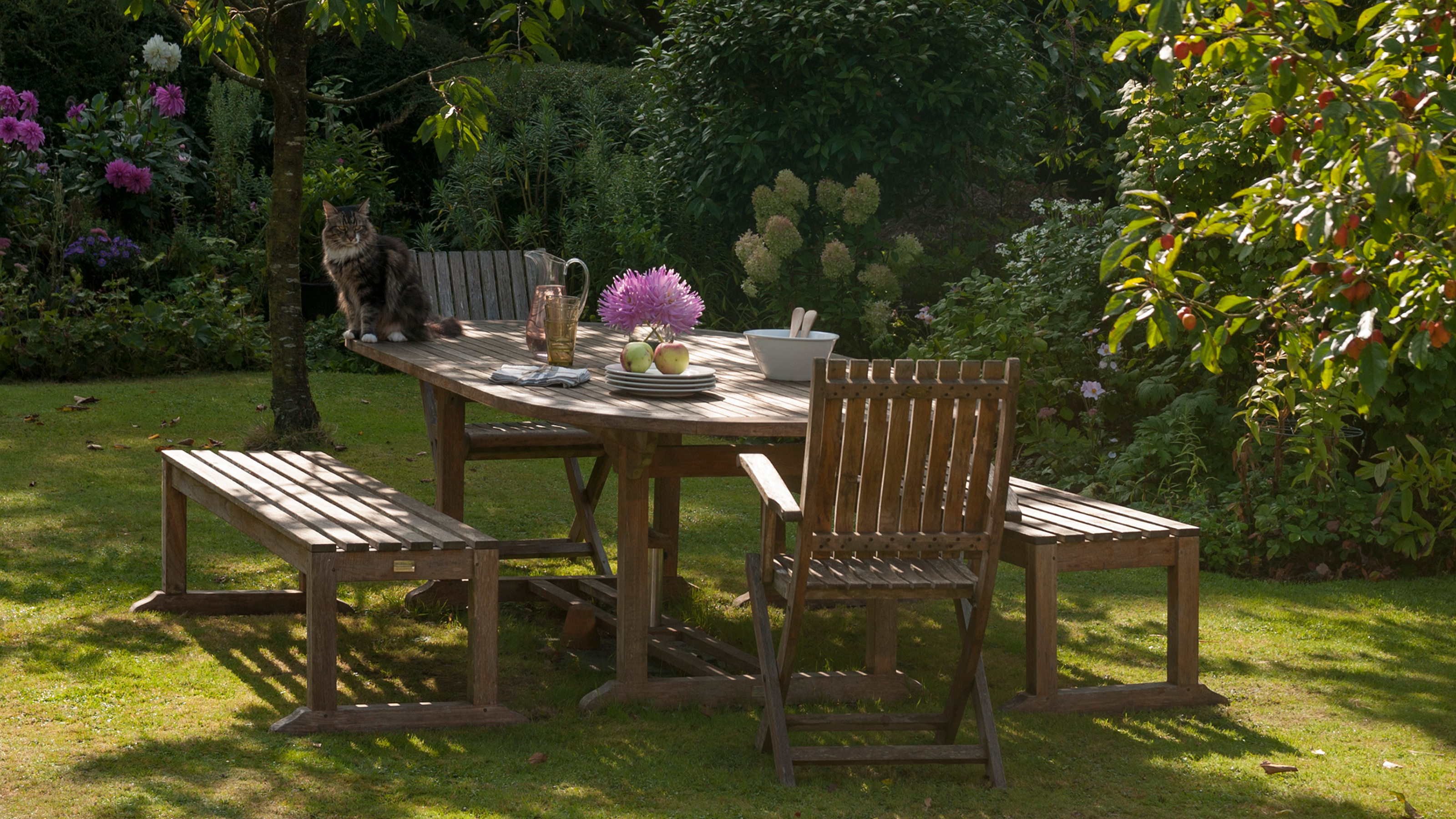

No garden would be complete without some garden furniture. And if you’re getting ready to whip your tables, chairs, and sun loungers out of the shed for a summer in the sunshine, you might be wondering where the best place to put it is.
The best garden furniture comes in so many different shapes and forms and it's natural to ask the question: can you put garden furniture on grass? Whether you’re a big fan of the top rattan garden furniture or you’re partial to more natural wooden garden furniture, there’s no doubt that outdoor furniture can turn what could be a very lost space into a practical and enjoyable outdoor oasis.
But before you put your garden furniture on the grass for family BBQs or quiet morning coffees, you might want to dust off your lawn care expertise and consider whether this is really the right thing to do.
Can you put garden furniture on grass?
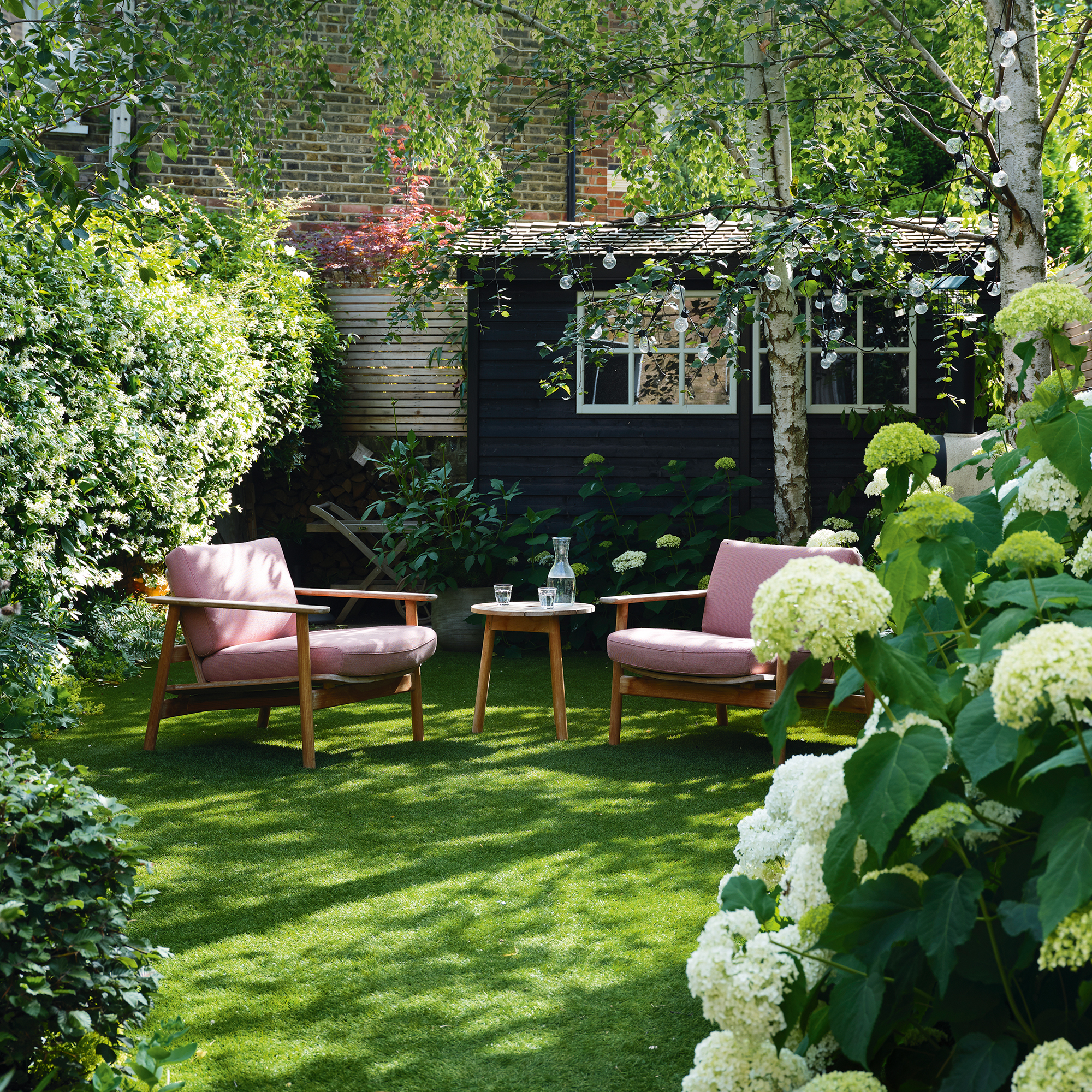
‘It’s possible to place garden furniture on grass, but there are several reasons why it may not be the best surface for your outdoor furniture,’ explains Caron Grant, Brand Manager at Bridgman.
Steve Chilton, garden expert at LeisureBench, says, ‘By putting heavy garden furniture directly on the grass, you risk killing or damaging the grass underneath it. The weight of the furniture will compress the grass down and will eventually create either bare patches of lawn or yellow/brown patches where the grass is dead.’
Not only can this ruin the aesthetic of your garden, but it can also add more jobs to your to-do list. You may find yourself constantly overseeding your lawn in an effort to regrow dead grass, and it’s likely that you’ll struggle with lawn drainage issues as a result.
If that isn’t enough, Lucie Bradley, Greenhouse and Gardening Expert at Two Wests & Elliot, says, ‘Thin metal legs can start to sink into the soft grass over time, making your lawn uneven.’ This means that you may have to get your hands dirty in an effort to level your lawn - especially if you have metal outdoor furniture.
Get the Ideal Home Newsletter
Sign up to our newsletter for style and decor inspiration, house makeovers, project advice and more.
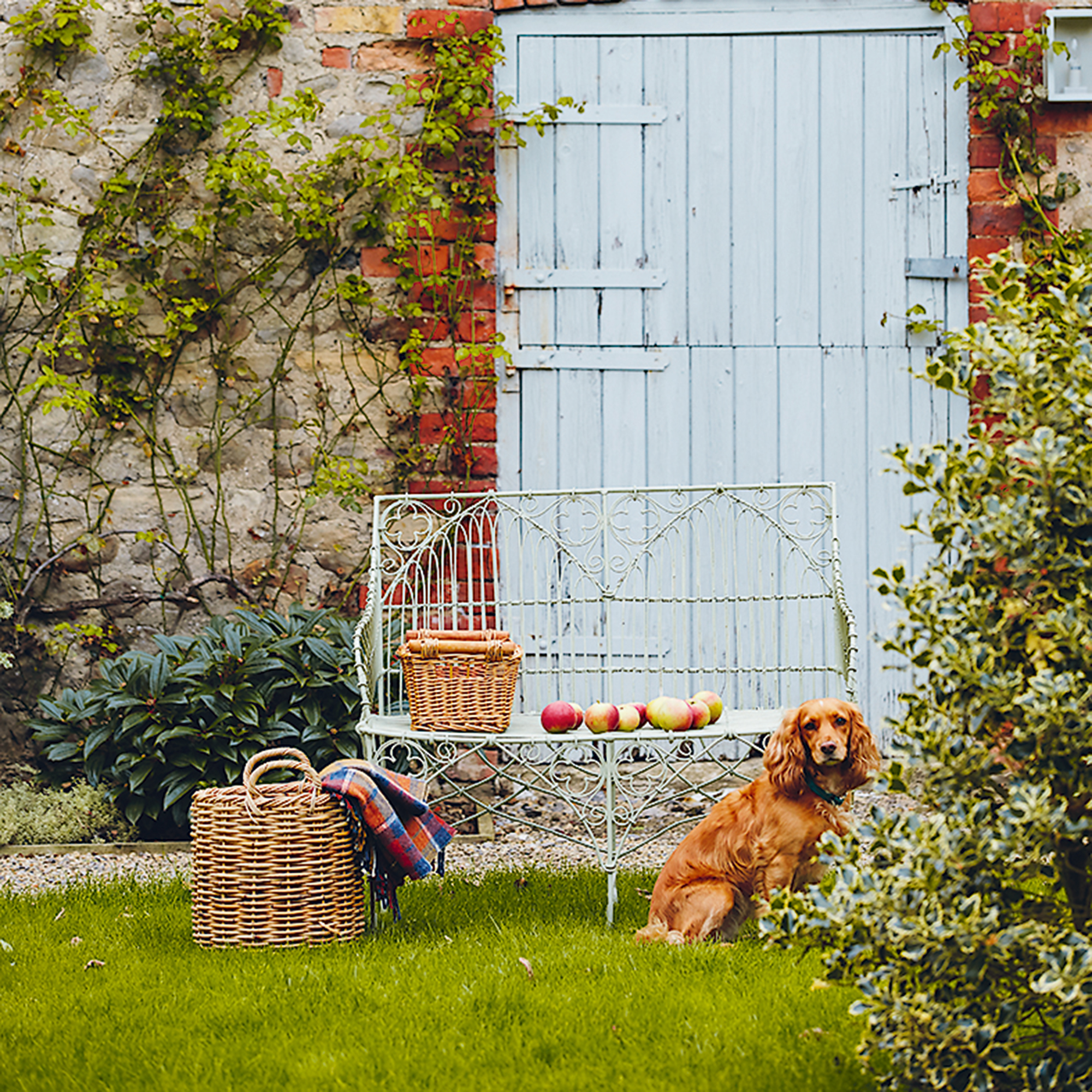
Putting garden furniture on your grass won’t just damage your grass, though. It also has the potential to damage the garden furniture itself.
‘I would never recommend putting certain types of garden furniture directly on grass,’ says Steve. ‘For example, rattan garden furniture should never be placed on grass as when the grass gets wet, it can damage the legs of the furniture.’
In fact, that’s one of the reasons why you should never use a pressure washer on certain types of garden furniture. And it’s not just rattan you should avoid putting on the grass, either.
Lucy explains, ‘Wood furniture is most at risk of becoming damaged. Wood absorbs moisture and dirt which could stain the wood, make it mouldy or cause the wood to split. Metal furniture wouldn’t be affected similarly, but it could begin to rust if left out for a long time. Plastic or resin furniture won’t absorb moisture, but it is likely to be stained by being sited on damp grass – especially if it’s light-coloured.’
And as garden furniture can be a big investment, it’s just not worth the risk of putting it on your garden furniture.
How to minimise lawn damage caused by garden furniture

Of course, we understand that some of us have no choice but to put garden furniture on grass. But if you don’t have a patio or only have a tiny slither of grassy outdoor space, there are ways you can minimise lawn damage caused by garden furniture.
Use furniture caps: Caron says, ‘If grass is the only surface you have to work with, you can invest in rubber stops or plastic caps to help prevent your furniture from sinking into the grass, this is especially helpful after heavy rainfall.’ These Sayayo Non-Slip Rubber Feet for Garden Furniture Chairs from Amazon should do the trick.
Choose lightweight furniture: As you can imagine, the heavier the garden furniture, the bigger the impact it will have on your grass. So, it’s always a good idea to opt for lightweight furniture instead. Lucie says, ‘Opt for high-quality pieces treated to resist moisture and lightweight options like plastic are less damaging than wood or metal.’ She also says, ‘Choose furniture with wider legs or feet to distribute weight and prevent sinking into the grass.’
Move it around regularly: If you’re going to put garden furniture on grass, you should avoid keeping it in the same place for weeks on end. Lucie explains, ‘Moving garden furniture weekly can minimise grass damage. While leaving furniture in the same spot for a few days won't cause permanent harm, prolonged placement throughout the summer might result in sacrificing some grass health for enjoyment.’
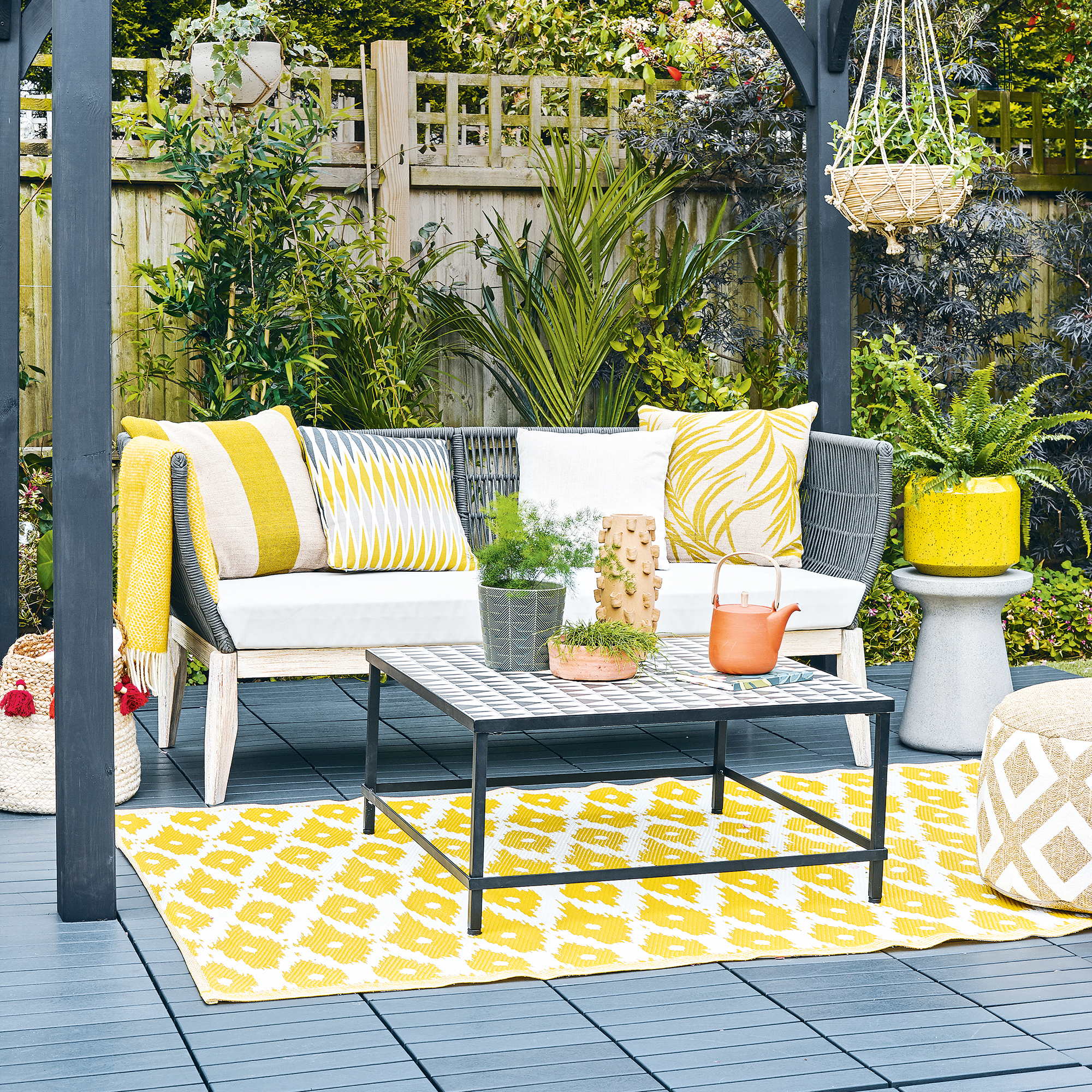
Use temporary outdoor flooring: If you only plan on putting your garden furniture on your grass temporarily (say, for a big family BBQ), then it’s probably worth your while using temporary outdoor flooring like these Black Interlocking Floor Tiles from B&Q. This will provide and strong and stable base for your tables and chairs, protecting your grass in the process. Of course, this shouldn’t be a permanent solution.
Consider artificial grass: It’s not for everyone, but those who only have grassy areas in their garden might want to consider this option. Gardening expert and founder of Garden List, Oliver Hill, says, ‘In areas where you want to place furniture, consider using artificial turf. It provides a stable and aesthetically pleasing base that requires less maintenance and won't suffer from the weight of furniture.’
The best garden furniture - our top picks
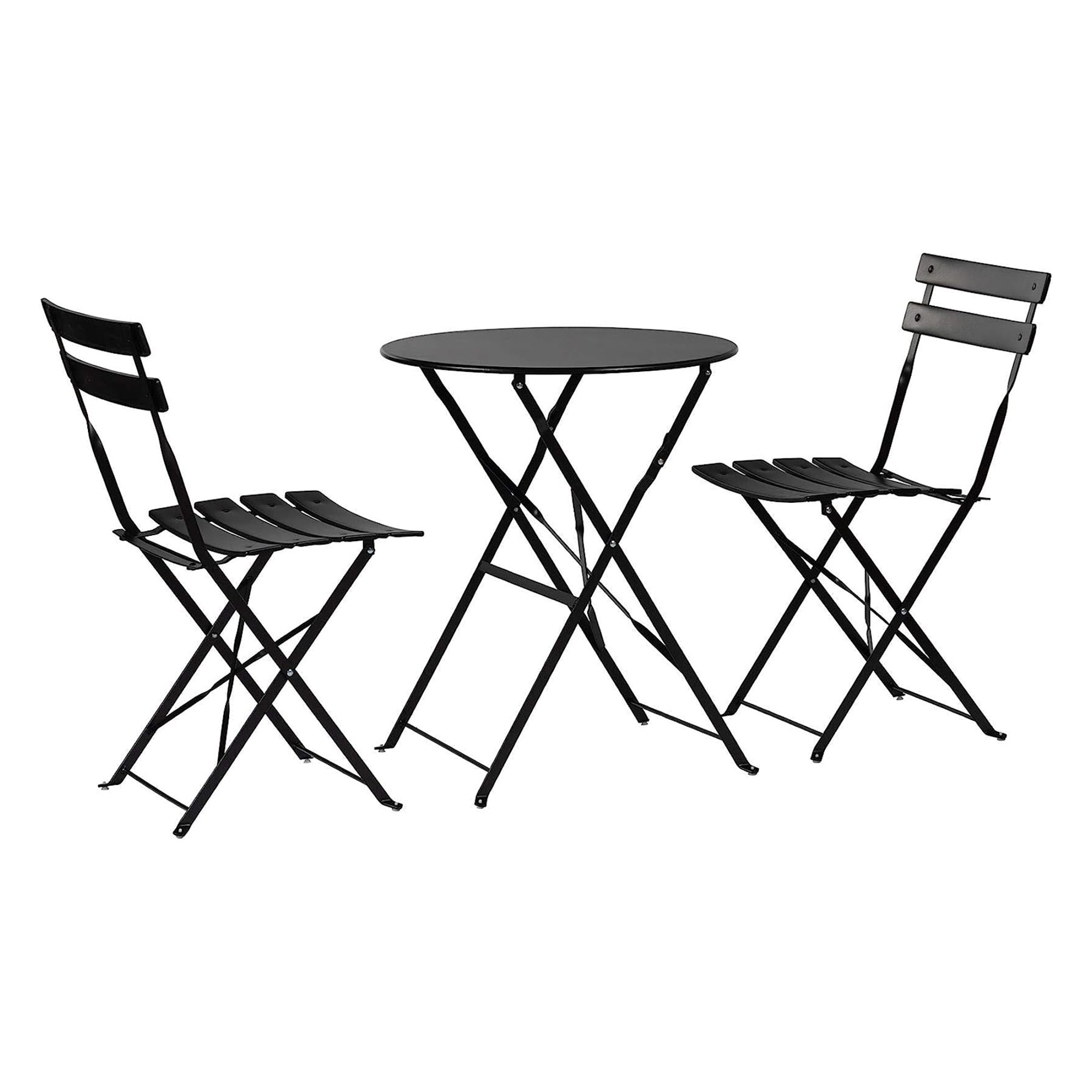
Lightweight and foldable, this bistro set is perfect for those who have no option but to put garden furniture on their grass. When you're not using it, simply fold it up and pop it away!
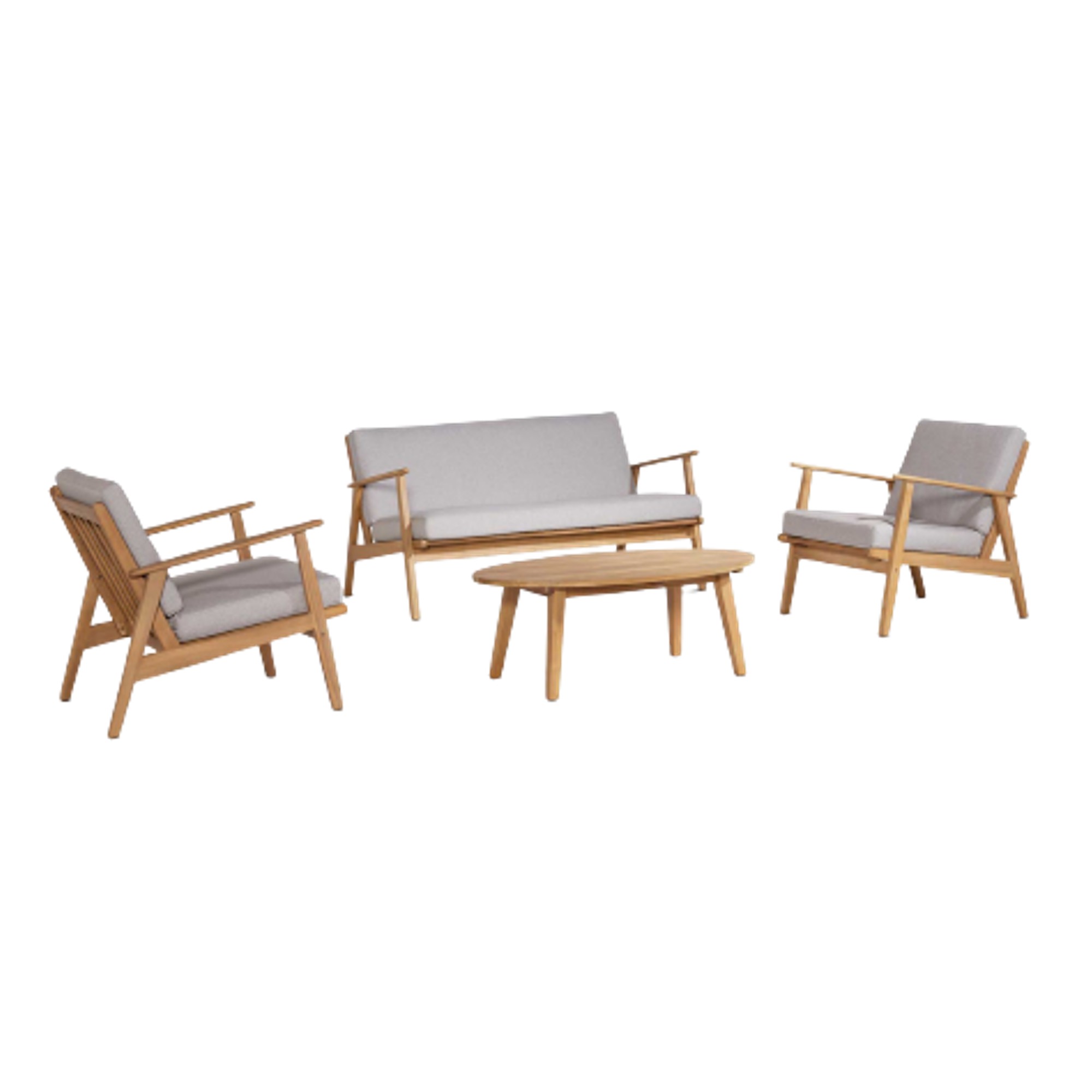
This lounge set has been celebrated for being so incredibly lightweight, which is ideal for those who want to add a seating area to their lawns. It's also absolutely stunning.
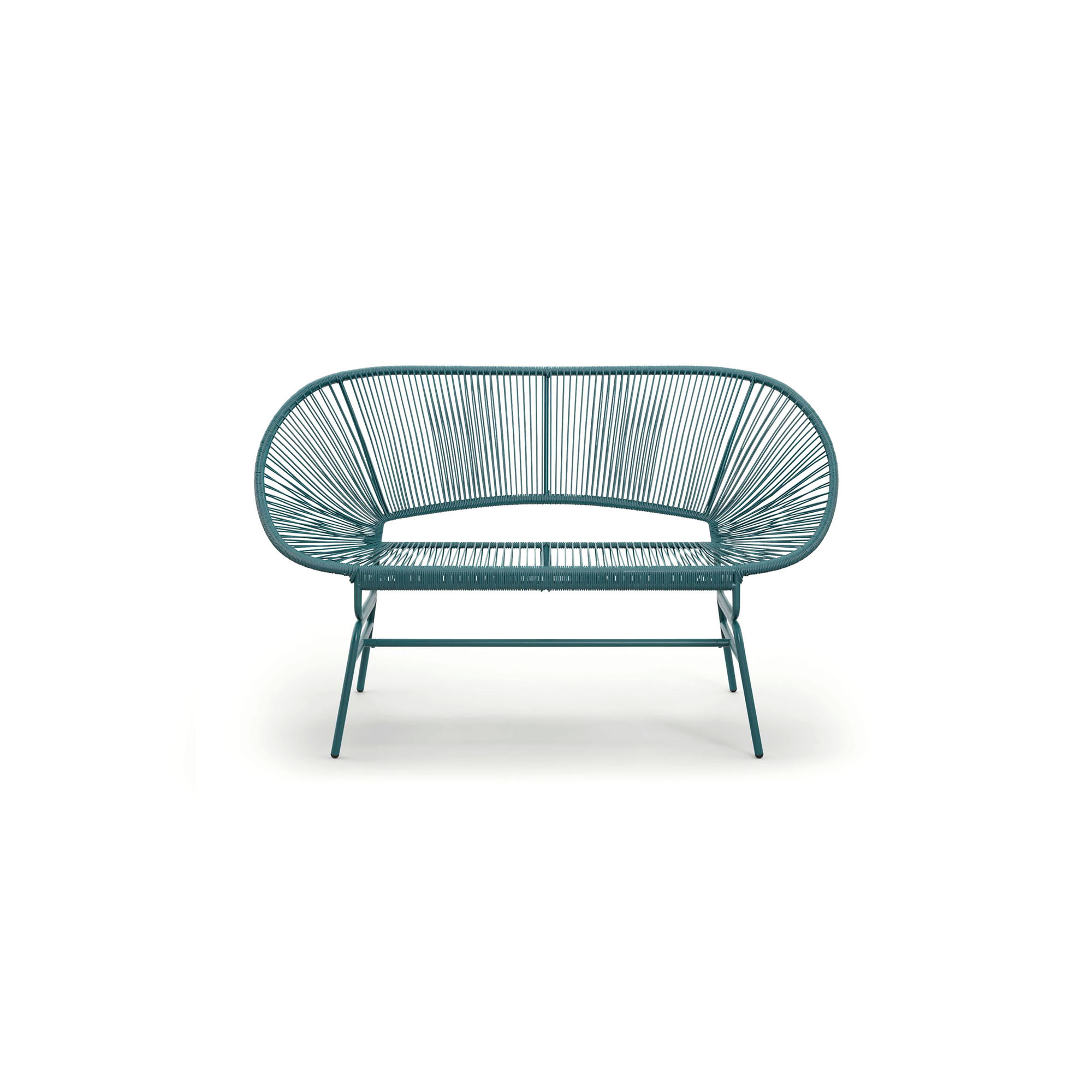
With space for light and water to get through to the grass, this M&S garden sofa will give your lawn its best chance at survival - even if you do have to keep it on there all the time. Plus, it's powder-coated for extra durability.
FAQs
Can you leave garden furniture on grass?
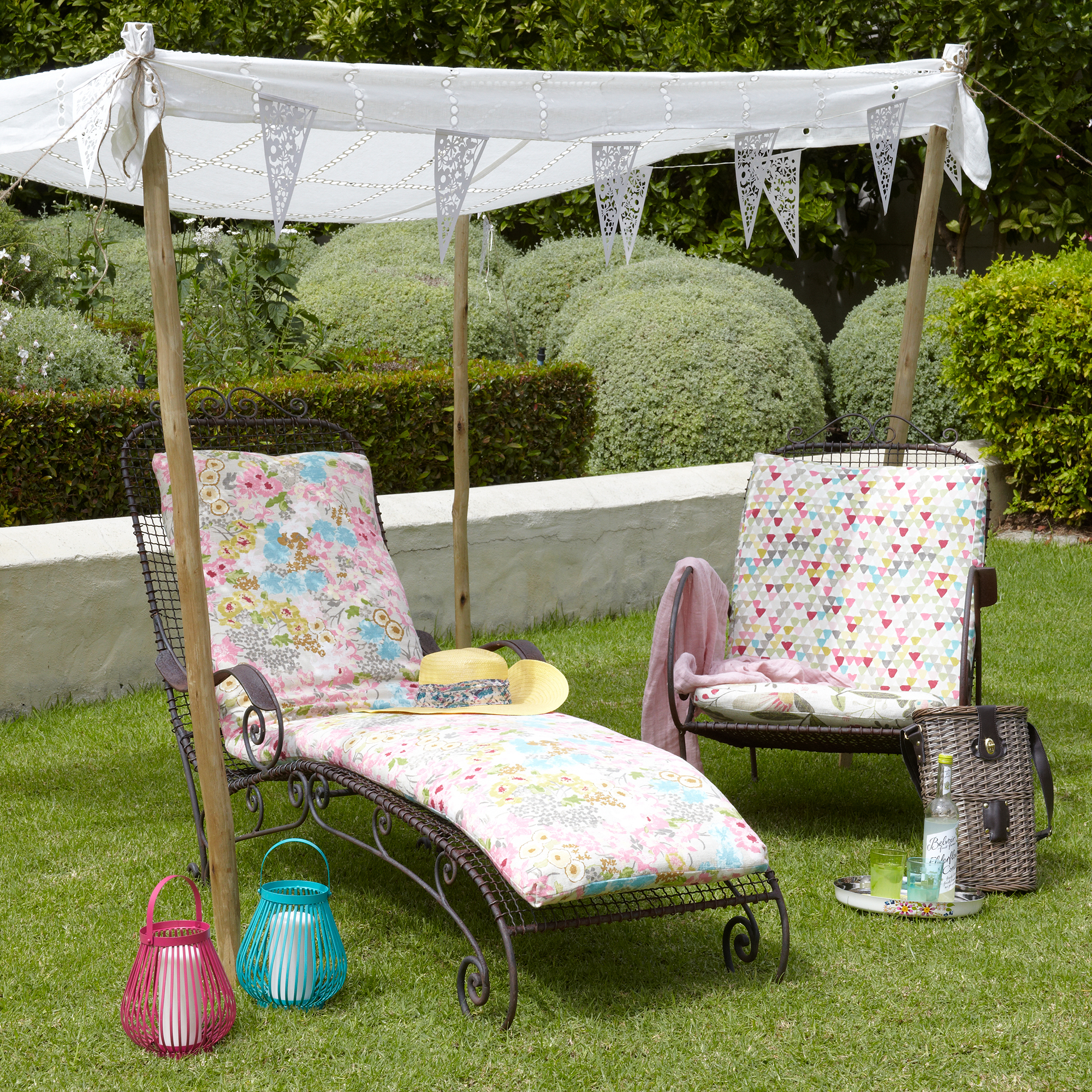
Technically, you can leave your garden furniture anywhere you want. But if you want to maintain the health and integrity of your lawn, it’s best to keep it off your grass at all times.
Leaving garden furniture on grass will not only compact the grass, but it’ll also restrict it from vital sunlight and water. As a result, the grass underneath will most likely die.
Doing so may also damage your garden furniture, which is why it’s preferable to leave garden furniture on a patio or decking area. If you only have grass in your garden, you should attempt to move the furniture when you’ve finished using it or move it around your grass regularly to ensure it doesn’t stay in the same place for too long.
How do you put outdoor furniture on grass?
If you have no choice but to put garden furniture on grass, there are a few things you can do to protect your grass and your furniture.
If you haven’t bought garden furniture yet, opt for lighter materials such as plastic or metal, as well as furniture that has wider feet to spread out the weight.
Alternatively, those who already have furniture can add furniture caps to the bottom of their tables and chairs and even put down temporary flooring for when they need to put the furniture on grass.
If you have garden furniture on grass, it’s probably time to move it…

Lauren Bradbury has been the Content Editor for the House Manual section since January 2025 but worked with the team as a freelancer for a year and a half before that. She graduated with a Bachelor’s degree in English and Creative Writing from the University of Chichester in 2016. Then, she dipped her toe into the world of content writing, primarily focusing on home content. After years of agency work, she decided to take the plunge and become a full-time freelancer for online publications, including Real Homes and Ideal Home, before taking on this permanent role. Now, she spends her days searching for the best decluttering and cleaning hacks and creating handy how-to guides for homeowners and renters alike, as well as testing vacuums as part of her role as the Ideal Home Certified Expert in Training on Vacuums, having spent over 110 hours testing different vacuum models to date!
-
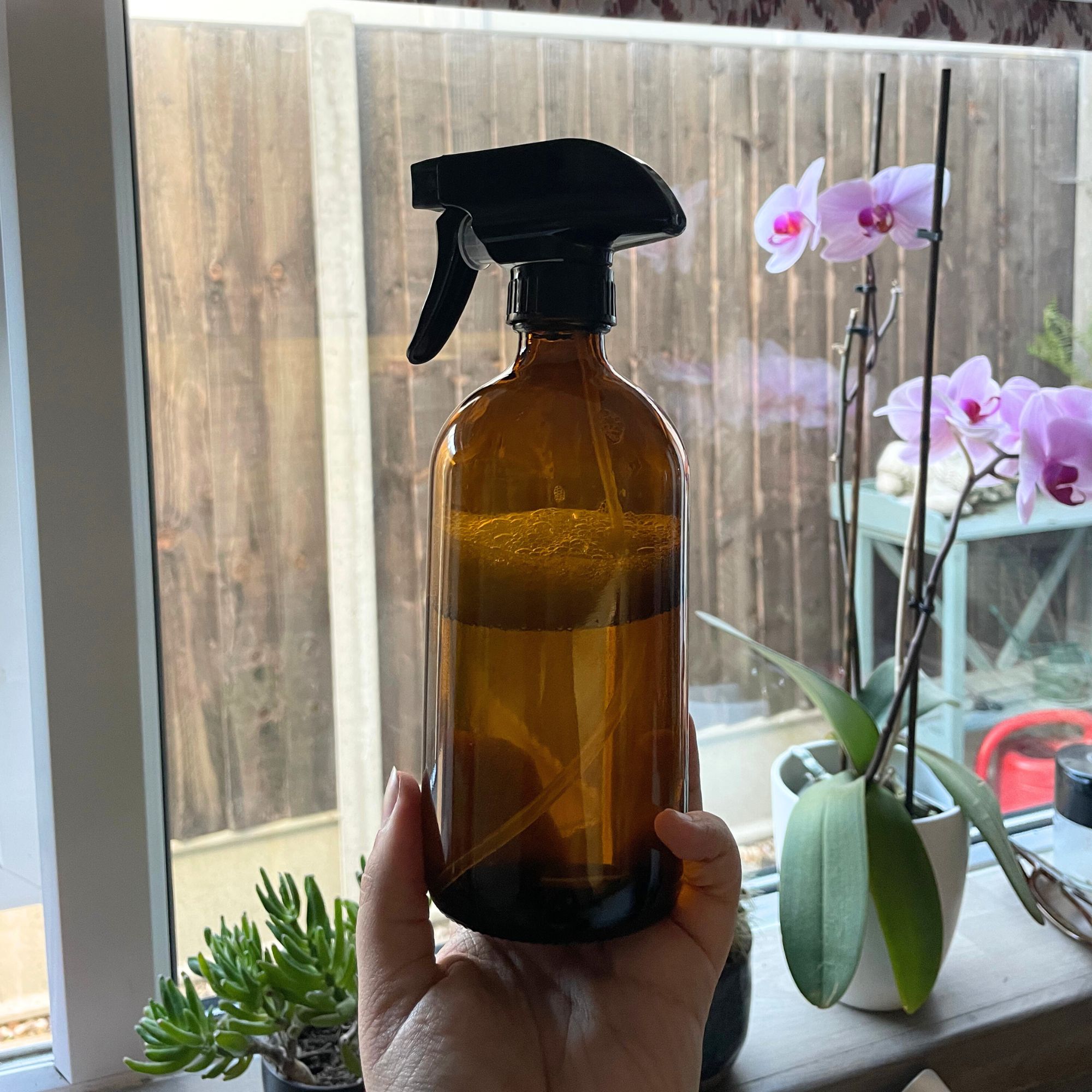 My mum introduced me to Nancy Birtwhistle’s ‘Pure Magic’ recipe - now I don’t think I’ll need to buy another cleaning product ever again
My mum introduced me to Nancy Birtwhistle’s ‘Pure Magic’ recipe - now I don’t think I’ll need to buy another cleaning product ever againI live in a hard water area, and it's the ONLY thing that's removed the limescale in my toilet
By Lauren Bradbury
-
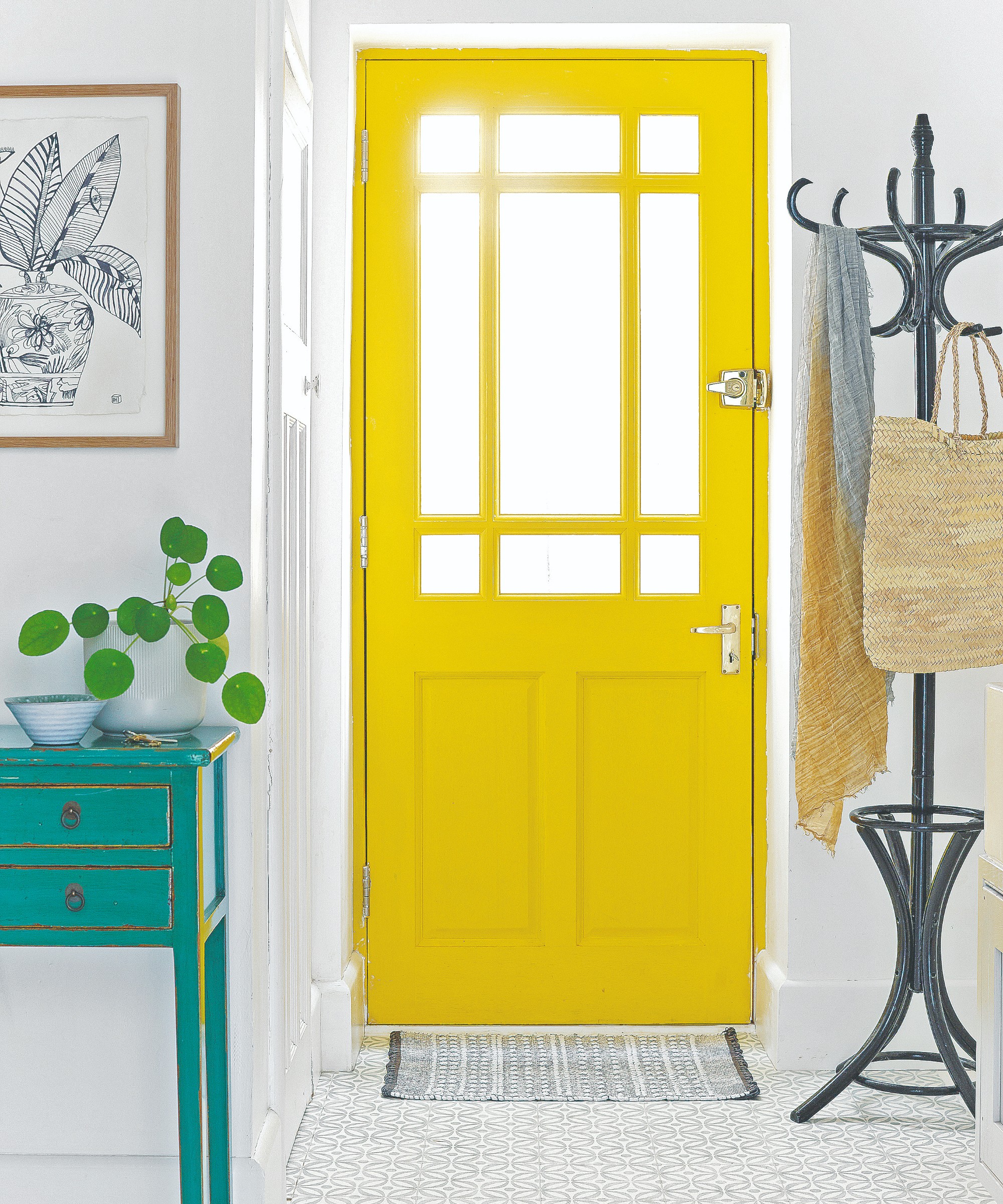 5 most welcoming colours to paint a front door, according to experts and colour psychology
5 most welcoming colours to paint a front door, according to experts and colour psychologySend out the welcoming vibes before the door is even open
By Ellis Cochrane
-
 How and when to fertilise peonies for bigger, brighter blooms, according to experts
How and when to fertilise peonies for bigger, brighter blooms, according to expertsFind out everything you need to know about fertilising peonies and how to boost their beautiful blooms for longer
By Lisa Fazzani